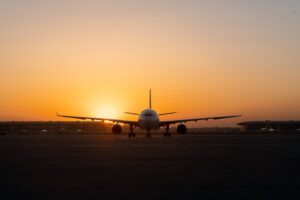By Ashley Erika O. Jose, Reporter
A SURGE in demand during Holy Week and the start of the summer season likely boosted revenue growth for airline companies in the first quarter (Q1), according to analysts, but cautioned about potential challenges ahead due to rising jet fuel prices.
“The surge in travel demand coinciding with the timing of the Holy Week, which occurred in late March, and the onset of the summer season would’ve likely supported the revenue growth of airline companies in the first quarter,” China Bank Securities Corp. Research Director Rastine Mackie D. Mercado said in an e-mail on Monday.
However, the volatility of the fuel market due to the ongoing geopolitical tensions and the additional output cut by the Organization of the Petroleum Exporting Countries and their allies including Russia (OPEC+) may hurt airlines growth for the period, he added.
“Prospects of higher jet fuel prices, driven by geopolitical tensions in the Middle East, and prolonged oil output cuts from OPEC+ could lead to some demand and margin pressures in the near term,” he also said.
In March, members of OPEC+ announced that they would extend the oil output cut of about 2.2 million barrels per day until the second quarter to maintain a balanced oil market supply.
On Monday, oil companies were set to hike pump prices by P0.40 per liter for gasoline, P0.95 per liter for diesel, and P0.85 per liter for kerosene.
These price adjustments brought a year-to-date net increase of P9.70 for gasoline, P7 for diesel, and P2.25 for kerosene.
The Department of Energy said that surging oil prices are expected to continue due to the OPEC+ cut, while downplaying the impact of the ongoing Israel-Iran conflict.
The Civil Aeronautics Board (CAB) has retained the airline fuel surcharge at Level 6 for April.
Latest data from the Energy department showed that Dubai crude climbed by nearly $4 per barrel for the first week of April. The international prices of gasoline, diesel, and kerosene have also increased by about $2.40, $3.60, and $3.40 per barrel, respectively.
Rizal Commercial Banking Corp. Chief Economist Michael L. Ricafort also said that the volatility of oil prices could pose risks to airline operations, as it may drive operating costs to increase further.
“Number of domestic airline passengers already exceeded pre-pandemic levels. Offsetting risk factor is the volatility in global crude oil prices amid increased tensions in the Middle East that could increase operating costs and could narrow profit margins,” he said in a Viber message.
For Globalinks Securities and Stocks, Inc. Head of Sales Trading Toby Allan C. Arce, airlines are still expected to significantly benefit from the post-pandemic revenge travel trend.
“Philippine airline companies seem positive based on the momentum gained in 2023 and early 2024,” he said, adding that growth may be sustained despite the changing market environment.
“Sustained growth will depend on the ability of airlines to adapt to changing market conditions, diversify their revenue streams, and mitigate risks associated with external factors beyond their control.”
For 2023, Cebu Air, Inc., the operator of budget carrier Cebu Pacific, registered a net income of P7.9 billion for 2023, reversing its losses in 2022.
The company recorded an operating income of P8.6 billion, while its EBITDA, or earnings before interest, taxes, depreciation, and amortization, reached P21.8 billion, marking a significant increase from the P664 million in 2022.
Its total expenses climbed 20% to P82 billion, which it attributed to higher fuel costs and fleet-related expenses.
PAL Holdings, Inc., the listed operator of flag carrier Philippine Airlines (PAL), saw its attributable net income more than double to P16.81 billion last year.
PAL noted that its jet fuel consumption rose by 8% due to increased flight activity last year. The company added that fuel costs accounted for 45.3% of its overall expenses.
“The post-pandemic revenge travel trend indeed seems to have benefited airlines… While the outlook appears positive, sustaining this growth and maintaining strong financial results in the first quarter of 2024 may face challenges. External factors such economic instability, and unpredictable shifts in travel restrictions,” Mr. Arce said.
To recall, CAB recorded a total of 50.18 million passenger volumes for 2023 covering both domestic and international flights.
The Tourism department reported 5.45 million international visitors in 2023, surpassing the year’s target of 4.8 million.
For 2024, the department aims to attract 7.7 million international visitors.
Flag carrier PAL said it expects passenger volume to rise up to 20% in 2024 from its more than 14 million passengers in 2023.
Last year, the airline company carried a total of 14.7 million passengers, marking a 58% increase from the 9.3 million passengers recorded in 2022.
Data provided by the company showed that PAL managed to mount a total of 105,294 flights last year, 35.8% higher than the 77,533 total flights in 2022. Meanwhile, Cebu Pacific flew over 20 million passengers on more than 140,000 flights. This translated to approximately a 41% increase in passengers and a 30% increase in flights compared to the previous year.
